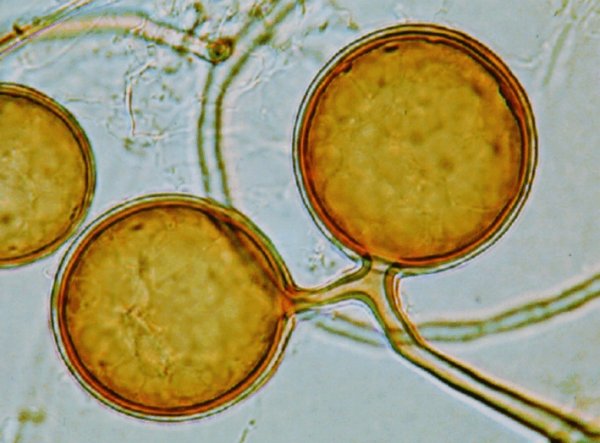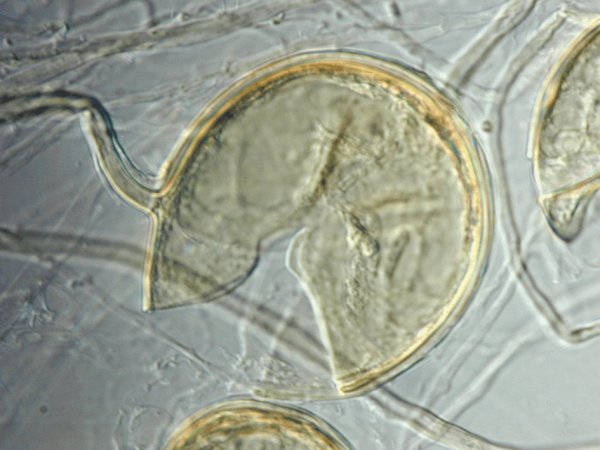
Reproduction
Organisms usually reproduce either asexually, offspring formed by mitosis, or sexually, offspring formed by fertilization. Some microorganisms however, can have complex reproductive cycles. Fungi are one of these organisms. As summarized in Campbell (2009), the usual fungal life cycle has haploid hyphae growing in a substrate digesting food then absorbing the nutrients. The hyphae can go perform asexually reproduction by producing spores by mitosis or they can perform sexual reproduction a different way. When two different fungi hyphae from the same species but different organisms meet, they can go through plasmogamy. This is where the plasma membranes fuse together to form one hyphae. The newly formed hypha then has two haploid nuclei in each cell before it goes through karyogamy where the nuclei fuse together. A diploid cell is formed and can now perform meiosis to create genetically individual spores which go on to create their own network of hyphae or mycelium.
Some fungi aren’t as easily observed as others. One of these organisms includes the arbuscular mycorrhizal fungi (AMF) Glomus intraradices. This fungus, like many other fungi, can have multiple nuclei per one cell due to nuclear division without cytokinesis and are called multinucleate. The fungus then can reproduce asexually by huge, multi nuclei spores that are created underground. This huge spore then cracks open releasing these new fungi organisms. Sexual reproduction has not been yet observed for these kinds of fungi (Marleau et al. 2011).
In the next two pictures from the Agriculture and Agri-Food Canada website, you can see the gigaspore containing multiple nuclei. These gigaspores can often be seen by the naked eye while the fungal hyphae is microscopic.
Once the gigaspore is mature, it germinates. This individual would most likely be genetically identical to the individual that created the gigaspore besides mutations that could have taken place.
Without sexual reproduction, gene recombination would theoretically be impossible except via mutations. Gene recombination has not been documented in many AMF species except for a few species: G. claroideum, Glomus sp. and, G. intraradices (Bakker et al. 2010). This is very important knowledge because G. intraradices is in a mutualistic symbiosis with many plant species. If G. intraradices adapts or changes its genes in a specific ecosystem, then the plants could be affected in the way that the plant absorbs water and nutrients. This knowledge can also impact commercial uses of AMF. The assumption was that if we introduced commercial AMF to an ecosystem to help commercial crops, then the local AMF would not be genetically changed, but now we can see that gene recombination is possible within species of AMF affecting the native strains of Glomus intraradices (Croll and Sanders 2009).
<Form and Function Home Interactions>

